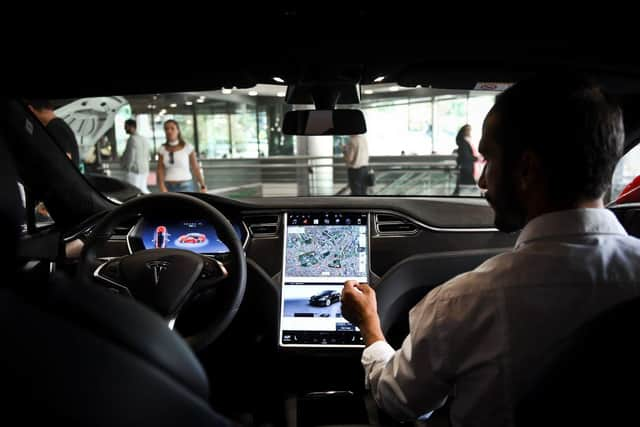Tesla car crash: what happened in Texas accident where two men died - and how safe is the autopilot feature?
and live on Freeview channel 276
Two men have died after a Tesla car, believed to be operating without a human driver, crashed into a tree in Houston, Texas.
The crash, which occured on Saturday night (April 19), saw the Tesla vehicle fail to navigate a curve in the road, crashing into a tree and bursting into flames.
What happened in the accident?


Advertisement
Hide AdAdvertisement
Hide AdThe Tesla car, a 2019 Model S, was travelling at a high speed as it approached a curve on a winding road in Houston.
The car failed to negotiate the curve and swerved off course, hitting a tree and bursting into flames.
Mark Herman, Harris County Precinct 4 constable, said “evidence suggests” that “no-one was driving the vehicle at the time of impact,” with both victims of the crash, in their 50s, discovered in the front passenger seat and the back of the vehicle.
It is not yet clear whether the car’s Autopilot feature was in use at the time of impact.
How common are Tesla crashes?
Advertisement
Hide AdAdvertisement
Hide AdTesla says its “model S, Model X and Model 3 [vehicles] have achieved the lowest overall probability of injury of any vehicle ever tested by the U.S. government’s New Car Assessment Program.”
However, Tesla’s Autopilot feature has been implicated in several crashes, with the US National Highway Traffic Safety Administration opening investigations into 27 crashes involving Tesla vehicles just last month.
How do Tesla cars work?
Tesla has been criticised for use of the term “Autopilot” in its communications, with critics saying the term leads driver to believe they do not have to stay alert or engaged when the feature is switched on.
“Autopilot” is a semi-autonomous driving system which can only guide a car under limited circumstances.
Advertisement
Hide AdAdvertisement
Hide AdA more complex version of this technology, called “full self-driving”, is due to be released by Tesla later this year.
Even this technology, however, does not mean a driver should totally switch off while in the car.
Tesla says that human drivers are supposed to be alert and in control at all times, even when Autopilot is switched on.
Their cars have systems which are meant to ensure human drivers keep their hands on the wheel at all times to avoid a lack of alertness.
Advertisement
Hide AdAdvertisement
Hide AdTeslas run on battery power, with cars charged at special ports.
The cars are equipped with a small motor, around the size of a watermelon, which powers the car, converting electrical energy from the battery into mechanical energy which moves the vehicle.
Will Tesla face consequences for the crashes?
Tesla is now facing scrutiny in the wake of recent crashes involving the Autopilot system.
Shares in the company were almost 2 per cent down on Monday, April 19, in the wake of the Houston crash.
Advertisement
Hide AdAdvertisement
Hide AdIn January, Tesla CEO Elon Musk said he hopes to deliver huge profits for the company via rollout of the "full self-driving" software to a greater number of customers.
He said he was "highly confident the car will be able to drive itself with reliability in excess of human this year".
The technology, however, will have to overcome regulatory and safety hurdles in order to be commercially successful and viable.